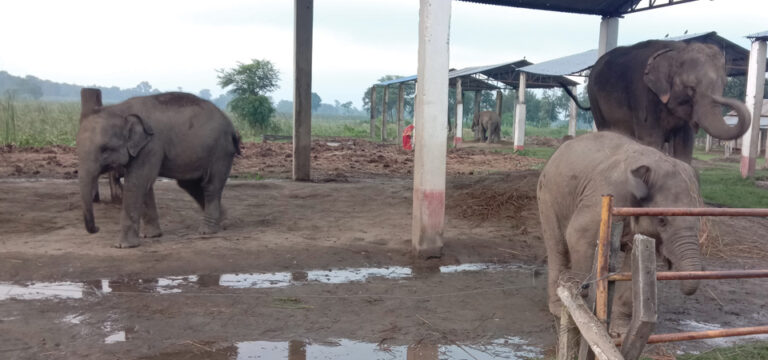
An interview of Chief Conservation Officer of Koshi Tappu Wildlife Reserve Ashok Ram by Jaya Krishna Yadav, Inaruwa.
What is Koshi Tappu Wildlife Reserve doing to increase elephant population?
The population of elephants is increasing in the Koshi Tappu Wildlife Reserve. There are a total of eight elephants under the reserve’s conservation among which seven are female.
Elephants have been a major attraction for domestic and foreign tourists at the wildlife reserve. The reserve plans to increase the number of elephants and has taken different approaches towards it.
According to Ashok Ram, the chief conservation officer at the wildlife reserve, 63-year-old Shovakali, one of the seven female elephants, is giving birth to a baby calf within next few days.
What type of elephants are there in Koshi Tappu Wildlife Reserve?
There are both domesticated and wild elephants in the reserve. There are seven domesticated elephants under the protection of the reserve including seven females – Shovakali, Americakali, Saraswatikali, Damdamkali, Laxmikali, Koshikali and two-year-old Kushahakali – and a two-year-old male elephant named Uttarigunj.
Among a total of 10 elephants allocated for the reserve, five were sent to Chitwan National Park two decades ago.
Officials expect around 14-15 wild elephants to be in the reserve but are not certain of the numbers of males and females.
What is the pregnancy period for elephants?
Elephants are pregnant for up to 22-24 months. According to BBC Earth, elephants have the longest pregnancy period of any living mammal.
The domesticated female elephants of the reserve are left in the forest area nearby where they come in contact with wild male elephants. They spend some time together and the female gets pregnant during the time. The females are then brought back by the reserve.
Wild elephants came to the reserve during the 1990s. Before then, the female elephants of the reserve didn’t get pregnant.
Laxmikali is said to be 10-months pregnant as well.
How are pregnant elephants and newborn claves taken care of?
According to Mahout Rajesh Singh, they need to spend more time when an elephant is pregnant or a new calf is born.
According to conservation officer Ram, pregnant elephants are provided extra care during their pregnancy. Shovakali is recently kept under similar care and is given nutritious food like rice pudding and chickpeas regularly. An elephant is daily provided with 15kg rice, 1.5 kg jiggery, grass and 25 gram salt.
A total of three individuals are recruited to look after one elephant in the reserve. The training to the newborn calves starts after they reach two years of age.
A solar fence has been setup around the sheds of the elephants to protect them from wild elephants by the reserve. They have also kept tractors on the bank of Koshi River to chase away the wild elphants; the wild elephants are said to run away from the sound of a tractor.
Which elephants have given birth in the recent time?
While Shovakali is expected to give birth in the next few days, two years ago Laxmikali had given birth to a calf followed by another birth by Laxmikali.
Following the increasing numbers in the elephant population, the reserve has also improved its services and capacities to look after the newborns and pregnant elephants. They have also strengthened the security across the reserve.
How are elephants viewed by visitors?
The ones visiting the reserve are mostly in search of elephants. The tourists prefer sightseeing the reserve on an elephant and look at wild buffaloes, different birds and deers among others.
The reserve plans to improve the tourist sector by increasing the number of elephants alongside other animals and birds which reside in the reserve’s periphery.
Source : TRN,






